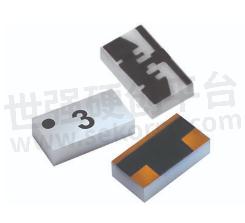Fixed Attenuators for Space and Defense Applications: Ensuring Reliability and Durability

In the realms of space exploration and defense technology, electronic components play a pivotal role in ensuring mission success and national security. Among these components, Fixed attenuators stand out as essential tools for signal management, maintaining the integrity of electronic systems amidst the most challenging environments. In this blog, we'll delve into the world of fixed attenuators and their critical applications in both space and defense contexts.
Understanding Attenuators
Attenuators are passive electronic devices designed to reduce the amplitude (magnitude) of a signal while preserving its waveform. They are available in various forms, including fixed attenuators, variable attenuators, and step attenuators. In this discussion, we'll focus primarily on fixed attenuators.
Fixed Attenuators: The Basics
Fixed attenuators offer a constant level of attenuation, meaning they reduce the signal's amplitude by a specific, predetermined amount, typically measured in decibels (dB). These devices feature a fixed resistance network that dissipates excess signal power as heat. Fixed attenuators are available in a range of attenuation values, such as 3 dB, 6 dB, 10 dB, and more. They find common use in scenarios where precise signal level reduction is required.
Space Applications
In space, the challenges faced by electronic components are extraordinary and unforgiving. Here's how fixed attenuators play a crucial role in addressing these challenges:
Radiation Hardening: Space is awash with ionizing radiation from the sun and cosmic rays. Fixed attenuators used in space applications must be designed to resist the effects of radiation, ensuring uninterrupted signal integrity.
Thermal Management: The extreme temperature variations in space, from frigid shadows to scorching sunlight, necessitate advanced thermal management systems. Fixed attenuators must withstand these temperature extremes to ensure reliable operation.
Vacuum Compatibility: Components used in space cannot outgas in the vacuum, as this could contaminate sensitive instruments or surfaces. Fixed attenuators must be vacuum-compatible to avoid such issues.
Vibration and Shock Resistance: The violent forces experienced during spacecraft launch and reentry require fixed attenuators to be ruggedized to withstand vibrations and shocks.
Environmental Testing: Components intended for space undergo rigorous testing in space simulators to ensure they can operate reliably under extreme conditions, including thermal vacuum chambers, radiation testing facilities, and vibration/shock testing setups.
Redundancy and Fault Tolerance: Critical systems in space often employ redundancy and fault tolerance to ensure continued operation even if a component fails, safeguarding mission success.
Materials Selection: High-reliability materials are carefully chosen for space components to resist radiation and temperature-induced degradation, ensuring long-term performance.
Defense Applications
In defense applications, board-level components, including fixed attenuators, are instrumental in ensuring national security. Here's how they are employed:
Printed Circuit Boards (PCBs): High-quality PCBs are essential in defense systems, providing a stable platform for mounting and interconnecting components.
Microprocessors and Microcontrollers: Advanced microprocessors are used in defense systems for data processing, requiring ruggedized designs to withstand harsh environments.
Memory Modules: Reliable memory modules are used to store and retrieve data quickly, designed to endure shock, vibration, and temperature variations.
RF and Microwave Components: In communication and radar systems, RF and microwave components are critical for signal processing and transmission, meeting stringent performance and durability standards.
Sensors: Various sensors are integrated into defense systems for data acquisition and situational awareness, chosen for their accuracy and ruggedness.
Ruggedized Enclosures: Enclosures protect board-level components from environmental factors, meeting military standards for durability and reliability.
Security and Encryption: Defense systems incorporate specialized security and encryption modules to protect sensitive information at the board level.
Conclusion
Fixed attenuators, alongside other board-level components, are the unsung heroes of space exploration and defense technology. These components ensure the reliability, durability, and performance required to meet the unique challenges of these environments. Space agencies and defense organizations rely on the expertise of industry leaders like Smiths Interconnect to provide high-reliability products that contribute to the success of critical missions and national security.
Fixed Attenuators - Small Signal
Substrates - BeO, AlN, Alumina, and CVD Diamond
Commercial and High-Reliability Product Lines
Frequency Ranges from DC to 50GHz
Attenuation Values from 0 to 30dB
Space and Military Qualified
Surface mount, bondable, and coaxial configurations

- +1 Like
- Add to Favorites
Recommend
- Smiths Interconnect Launches New Fixed Attenuators and Thermopad® Products Providing Heightened Defense and Space level performance
- Types of Fiber Optic Attenuators
- The SpaceNXT™ HC Series high reliability Seriestemperature variable and fixed chip attenuators for Next Generation Commercial Space Applications
- Smiths Interconnect TSX Fixed Chip Attenuators Offer Excellent Broad Band RF Performance to 50 GHz
- Smiths Interconnect‘ s New Fixed Chip Attenuators AT Series Offer Proven High Performance in Commercial Applications
- Smiths Interconnect Announced DC – 20GHz Wideband Surface Mount Fixed Attenuators TT9 SMT series
- Small but Mighty: How Attenuators Benefit Defense and Space Industries
- Smiths Interconnect Offered Isolators to Support NASA’s Europa Clipper Mission to Explore Jupiter’s Moon
This document is provided by Sekorm Platform for VIP exclusive service. The copyright is owned by Sekorm. Without authorization, any medias, websites or individual are not allowed to reprint. When authorizing the reprint, the link of www.sekorm.com must be indicated.





























































































































































































































































































































































































































































































































































































































































































































































































































































































